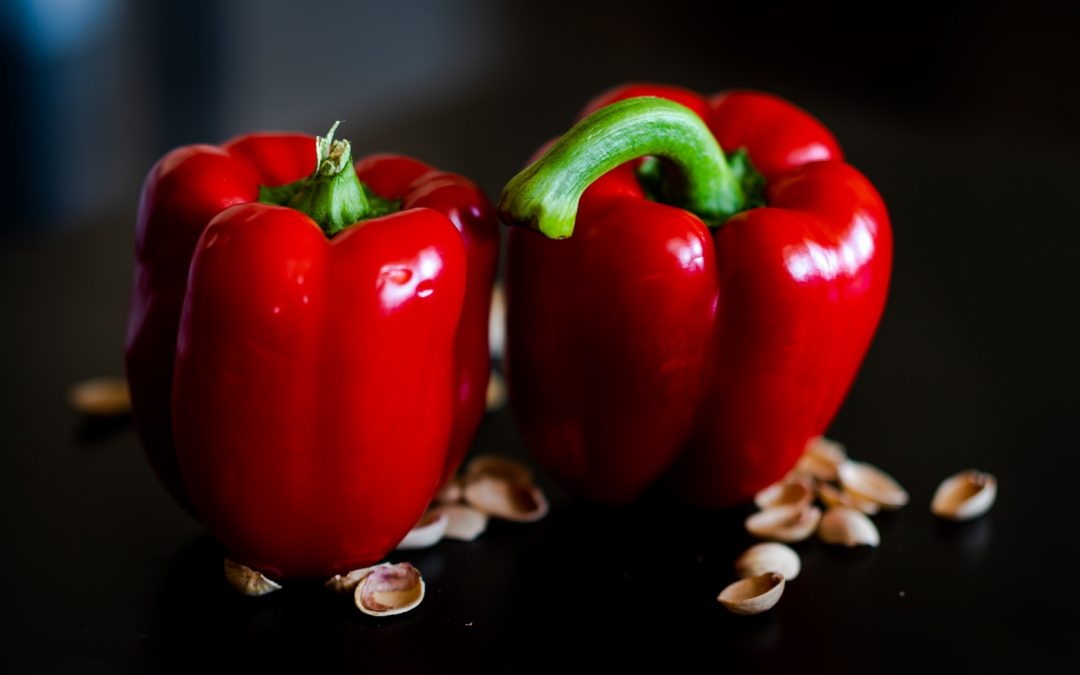Contents
- 1 Growing Bell Peppers Indoors (Beginner-Friendly Guide for Big Harvests)
- 1.1 Why Grow Bell Peppers Indoors?
- 1.2 Best Conditions for Growing Bell Peppers Indoors
- 1.3 Choosing the Right Pot and Soil
- 1.4 How to Plant Bell Peppers Indoors
- 1.5 Caring for Indoor Bell Peppers
- 1.6 Pollinating Bell Peppers Indoors
- 1.7 Common Problems and Easy Fixes
- 1.8 Harvesting Bell Peppers Indoors
- 1.9 FAQs on Growing Bell Peppers Indoors
- 1.10 Related Articles
- 1.11 Final Thoughts on Growing Bell Peppers Indoors
Growing Bell Peppers Indoors (Beginner-Friendly Guide for Big Harvests)
If you love the sweet crunch of fresh bell peppers but don’t have outdoor space, you’re in luck. Growing bell peppers indoors is easier than most beginners think — and with the right setup, you can enjoy homegrown peppers all year round. In this guide, you’ll learn the proven steps to get a healthy harvest of peppers right from your windowsill or grow light setup.
Why Grow Bell Peppers Indoors?
Bell peppers are not only colorful and delicious, but they’re also packed with vitamins A and C. Growing them indoors means:
You can enjoy peppers year-round, regardless of climate.
Fewer pests compared to outdoor growing.
Easy access to fresh produce straight from your kitchen.
Plus, they add a splash of greenery to your living space.
Best Conditions for Growing Bell Peppers Indoors
Bell peppers need a warm and sunny environment to thrive. Here’s what to keep in mind:
Temperature: 21–27°C (70–80°F) during the day, slightly cooler at night.
Light: At least 12–14 hours daily. A south-facing window or grow lights work best.
Humidity: Moderate humidity prevents dry soil and supports steady growth.
Choosing the Right Pot and Soil
For indoor growing, the right container and soil mix make all the difference.
Pot size: Use at least a 3–5 gallon container with drainage holes.
Soil: A high-quality, well-draining potting mix rich in organic matter.
pH: Keep soil slightly acidic to neutral (6.0–6.8).
You can find this Organic Potting Mix on Amazon.
How to Plant Bell Peppers Indoors
- Start seeds early: Begin indoors 8–10 weeks before the last frost.
- Sow seeds: Plant ¼ inch deep in seed trays or pots.
- Keep warm: Use a heat mat if your home is cool. Germination takes 7–14 days.
- Transplant: Move seedlings to larger pots once they reach 4–6 inches tall.
Caring for Indoor Bell Peppers
To keep your peppers thriving, focus on these essentials:
Watering: Keep soil moist but not soggy. Overwatering leads to root rot.
Feeding: Use a balanced fertilizer every 2–3 weeks once plants are established.
Pruning: Pinch off small side shoots to encourage stronger main stems.
Support: Tall plants may need stakes or cages.
Check price for Plant Support Stakes on Amazon.
Pollinating Bell Peppers Indoors
Indoors, you’ll need to help with pollination since there are no bees. Simply:
Gently shake the plants to spread pollen.
Use a soft brush or cotton swab to transfer pollen between flowers.
Common Problems and Easy Fixes
Even indoors, peppers can face a few issues:
Yellow leaves: Often caused by overwatering or lack of nutrients.
Leggy plants: Not enough light — move closer to a grow light.
No fruit set: Low pollination, so try hand pollinating regularly.
If pests appear (like aphids or spider mites), a simple soap spray usually does the trick. See the Royal Horticultural Society guide for pest management tips.
Harvesting Bell Peppers Indoors
Harvest when peppers are firm and glossy.
For sweeter flavor, wait until they turn red, yellow, or orange.
Use scissors or pruners to avoid damaging the plant.
FAQs on Growing Bell Peppers Indoors
1. How long does it take bell peppers to grow indoors?
About 60–90 days from transplanting seedlings to first harvest.
2. Can I grow bell peppers indoors year-round?
Yes, with consistent warmth and grow lights, they can produce all year.
3. Do indoor bell peppers taste the same as outdoor ones?
Yes! In fact, many gardeners say indoor-grown peppers taste sweeter and fresher.
Related Articles
Final Thoughts on Growing Bell Peppers Indoors
Growing bell peppers indoors is one of the most rewarding projects for beginner gardeners. With the right light, soil, and care, you can enjoy colorful, nutrient-packed peppers right from your kitchen. Start small, stay consistent, and you’ll soon be harvesting your own homegrown peppers — even in the middle of winter.

